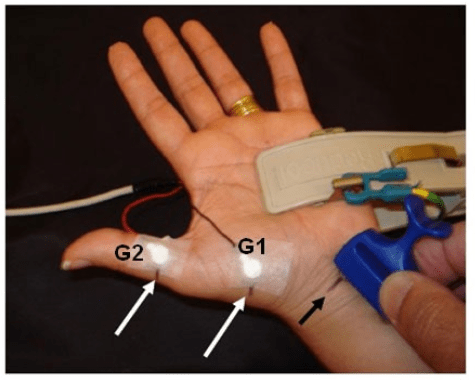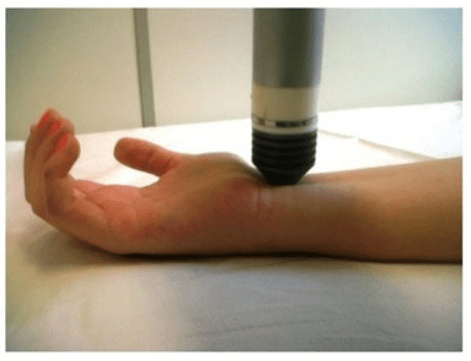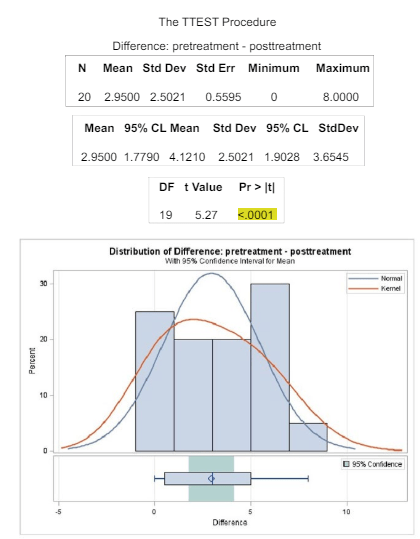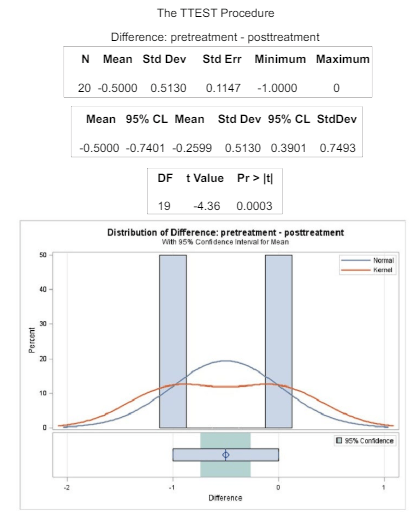1. Milani P, Mondelli M, Ginamneschi F, Mazzocchio R, Rossi A. Progesterone new therapy in mild carpal tunnel syndrome? Study design of a randomized clinical trial for local therapy. J Brachail Plex Peripher Nerve Inj. 2010; 5: 11. doi: 10.1186/1749-7221-5-11
2. MacDonald RI, Lichtman DM, Hanlon JJ, Wilson JN. Complications of surgical release for carpal tunnel syndrome. J Hand Surg AM. 1978; 3(1): 70-76. doi: 10.1016/s0363-5023(78)80118-x
3. Palmer AK, Toivonem DA. Complications of endoscopic and open carpal tunnel release. J Hand Surg. 1999; 24A: 561-565. doi: 10.1053/jhsu.1999.0561
4. Benson LS, Bare AA, Nagle DJ, Harder VC, Williams CS, Visotsky JL. Complications of endoscopic and open carpal tunnel release. Arthroscopy. 2006; 22(9); 919-924. doi: 10.1016/j.arthro.2006.05.008
5. Malhotra R, Kiran EK, Dua A, Mallinath SG, Bhan S. Endoscopic versus open carpal tunnel release: A short-term comparative study. Indian J Orthop. 2007; 41(1): 57-61. doi: 10.4103/0019-5413.30527
6. Boya H, Ozcan O, Oztekin HH. Longterm complications of open carpal tunnel release. Muscle Nerve. 2008; 38(5): 1443-1446. doi: 10.1002/mus.21068
7. Li Z, Smith BP, Tuohy C, Smith TL, Andrew Koman L. Complex regional pain syndrome after hand surgery. Hand Clin. 2010; 26(2): 281-289. doi: 10.1016/j.hcl.2009.11.001
8. Kim NH, Kim DH. Ulnar neuropathy at the wrist in a patient with carpal tunnel syndrome after carpal tunnel release. Ann Rehabil Med. 2012; 36: 291-296. doi: 10.5535/2Farm.2012.36.2.291
9. Lam CH, Yeung SH, Wong TC. Endoscopic carpal tunnel release: experience of surgical outcome in a Chinese population. Hong Kong Med J. 2010; 16: 126-131.
10. Arnander M, Teoh V, Barabas A, Umarjit S, Fleming A. Improved patient awareness and satisfaction using procedure specific consent froms in carpal tunnel descompression surgery. Hand Surgery. 2013; 18(1): 53-57. doi: 10.1142/S021881041350010X
11. Cartwhright MS, White DL, DeMar S, et al. Median nerve changes following steroid injection for carpal tunnel syndrome. Muscle Nerve. 2011; 44(1): 25-29. doi: 10.1002/mus.22067
12. Garfinkel MS, Singhal A, Katz WA, Allan DA, Reshetar R, Schumacher R. Yoga-Baser intervention for carpal tunnel syndrome: a randomized trial. JAMA. 1998; 280(18): 1601-1603. doi: 10.1001/jama.280.18.1601
13. Khoswari S, Moghtaderi A, Haghighat S. Acupuncture in treatment of carpal tunnel syndrome: A randomized controlled trial study. J Res Med Sci. 2012; 17(1): 1-7.
14. Muller M, Tsui D, Schnnur R, Bidulpph-Deisroth L, Hard J. Effectives of hand therapy interventions in primary management of carpal tunnel syndrome: a systematic review. J Hand Ther. 2004; 17: 210-228. doi: 10.1197/j.jht.2004.02.009
15. Snyder-Mackler L, Bork C. Effect of helium-neon laser irradiation on peripheral sensory nerve latency. Phys Ther. 1988; 68: 223-225. doi: 10.1093/ptj/68.2.223
16. Baxter GD, Walsh DM, Allen JM, Lowe AS, Bell AJ. Effects of low intensity infrared laser irradiation upon conduction in the human median nerve in vivo. Exp Physiol. 1994; 79: 227-234. doi: 10.1113/expphysiol.1994.sp003755
17. Greathouse DG, Currier DP, Gilmore RL. Effects of clinical infrared laser on superficial radial nerve conduction. Phys Ther. 1885; 65: 1184-1187. doi: 10.1093/ptj/65.8.1184
18. Weintraub MI. Nonivasive laser neurolysis in carpal tunnel syndrome. Muscle Nerve. 1997; 20: 1029: 1031. doi: 10.1002/(SICI)1097-4598(199708)20:8<1029::AID-MUS14>3.0.CO;2-Q
19. Irvine J, Chong SL, Amirjani NS, Chan M. Double-blind randomized controlled trial of low-level laser therapy in carpal tunnel syndrome. Muscle Nerve. 2004; 30: 182-187. doi: 10.1002/mus.20095
20. Muller M, Tsui D, Schnnur R, Bidulpph-Deisroth L, Hard J. Effectives of hand therapy interventions in primary management of carpal tunnel syndrome: a systematic review. J Hand Ther. 2004; 17: 210-228. doi: 10.1197/j.jht.2004.02.009
21. Barbosa RI, Rodrigues EKS, Tamanini G, et al. Effectiveness of low-level laser therapy for patients with carpal tunnel syndrome: design of a randomized single-blinded controlled trial. BMC Musculoskelet Disord. 2012; 13: 248. doi: 10.1186/1471-2474-13-248
22. Kimura J. Electrodiagnosis in diseases of nerve and muscle. Principles and practice. FA Davis: Philadelphia, 1983. doi: 10.1093/med/9780199738687.001.0001
23. Tascioglu F, Degirmenci NA, Ozkan S, Mehmetoglu O. Low-level laser in treatmente of carpal tunnel syndrome: clinica, electrophysiological and ultrasonographical evaluation. Rheumatol Int. 2012; 32: 409-415. doi: 10.1007/s00296-010-1652-6
24. Ekim A, Armagan O, Tascioglu F, Oner C, Colak M. Effect of low level laser therapy in rheumatoid arthritis with carpal tunnel syndrome. Swiss Med Wkly. 2007; 137: 347-352. doi: 10.4414/smw.2007.11581
25. Dincer U, Cakar E, Kiralp MZ, Kilac H, Dursun H. The effectiveness of conservative treatments of carpal tunnel syndrome: splint, ultrasound ald low-level laser therapies. Photomed Laser Surg. 2009; 27(1): 119-125. doi: 10.1089/pho.2008.2211
26. Yagci I, Elmas O, Akcan E, Ustun I, Gunduz OH, Guven Z. Comparison of splinting and splinting plus low-level laser therapy in idiopathic carpal tunnel syndrome. Clin Rheumatol. 2009; 28: 1059-1065. doi: 10.1007/s10067-009-1213-0
27. Casale R, Damiani C, Maestri R, Wells CD. Pain and electrophysiological parameters are improved by combined 830-1064 high-intensity LASER in symptomatic carpal tunnel syndrome versus Transcutaneous Electrical Nerve Stimulation A randomized controlled study. Eur J Phys Rehabil Med. 2012; 48: 1-7.
28. Evcik D, Kavuncu V, Cakir T, Subasi V, Yaman M. Laser therapy in the treatment of carpal tunnel syndrome: a randomized controlled Trial. Photomed Laser Surg. 2007; 25(1): 34-39. doi: 10.1089/pho.2006.2032
29. Kuryliszyn-Moskal D, Hojna K, Latosiewicz M. Comparison of the long- term effectiveness of physiotherapy programs with low-level laser and pulsed magnetic field in patients with carpal tunnel syndrome. Adv Med Sci. 2011; 56: 270-274. doi: 10.2478/v10039-011-0041-z









